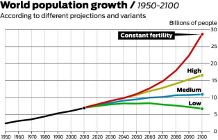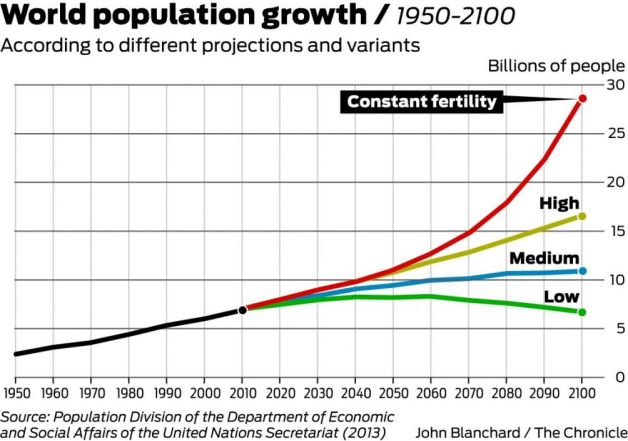Washington


California has 157 endangered or threatened species, looming water shortages, eight of the 10 most air-polluted cities in the country and 725 metric tons of trash 1 washing up on its coast each year.
California also has 38 million people, up 10 percent in the last decade, including 10 million immigrants. They own 32 million registered vehicles and 14 million houses. By 2050, projections show 51 million people living in the state, more than twice as many as in 1980.
Thank you, Geoff from AussieBushTrek, for e-mailing this.
In the public arena, almost no one connects these plainly visible dots.
For various reasons, linking the world's rapid population growth to its deepening environmental crisis, including climate change, is politically taboo. In the United States, Europe and Japan, there has been public hand-wringing over falling birthrates and government policies to encourage child-bearing.
But those declining birthrates mask explosive growth elsewhere in the world.
In less than a lifetime, the world population has tripled, to 7.1 billion, and continues to climb by more than 1.5 million people a week.
A consensus statement issued in May by scientists at Stanford University and signed by more than 1,000 scientists warned that "Earth is reaching a tipping point."
An array of events under way - including what scientists have identified as the sixth mass extinction in the earth's 540 million-year history - suggest that human activity already exceeds earth's capacity.


Climate change is but one of many signs of environmental stress. "The big connector is how many people are on earth," said Anthony Barnosky, a UC Berkeley integrative biologist.
The world population is expected to reach 9.6 billion by mid-century. The addition will be greater than the global population of 1950.
The United States is expected to grow from 313 million people to 400 million. Economies have expanded many times faster, vastly increasing consumption of goods and services in rich and developing countries.
"The combination of climate change and 9 billion people to me is one that is just fraught with potential catastrophes," said John Harte, a UC Berkeley ecosystem scientist.
"The evidence that humans are damaging their ecological life-support system is overwhelming," said the report by the Millennium Alliance for Humanity and the Biosphere at Stanford. "By the time today's children reach middle age, it is extremely likely that the Earth's life-support systems, critical for human prosperity and existence, will be irretrievably damaged."
California Gov. Jerry Brown had the report translated into Chinese and delivered it to Chinese President Xi Jinping in June.
A new epoch?
So complete is human domination of earth that scientists use the term "Anthropocene" to describe a new geological epoch.
The most obvious sign is climate change. People have altered the composition of the atmosphere by burning fossil fuels. But other human impacts, widely discussed by scientists, seldom reach the political arena.
Residues from 100 million tons of synthetic chemical compounds produced each year are so pervasive that they commonly appear in polar bear tissues, whale blubber and the umbilical cords of babies.
Each year, humans appropriate up to 40 percent of the earth's biomass, the product of photosynthesis, earth's basic energy conversion necessary to all life.
Humans have converted more than 40 percent of the earth's land to cities or farms. Roads and structures fragment most of the rest.
Humans appropriate more than half the world's fresh water. Ancient aquifers in the world's bread baskets, including the Ogallala in the Great Plains, are being drained.
Only 2 percent of major U.S. rivers run unimpeded. California's Sacramento-San Joaquin River Delta has been entirely re-engineered. The last time the Colorado River reached the Sea of Cortez was in 1998. The Nile, Indus and Ganges rivers have been reduced to a trickle.
Humans surpass nature as a source of nitrogen emissions, altering the planet's nitrogen cycle.
Footnote[s]
1. ↑ In truth, whilst the facts and statistics in the rest of the article are of great concern, 725 tonnes of waste being washed up onto the approximately 1,200 km coastline of California in 12 months seems far from excessive. Could this be a mistake or some sort of typographical error? - Ed

Add comment